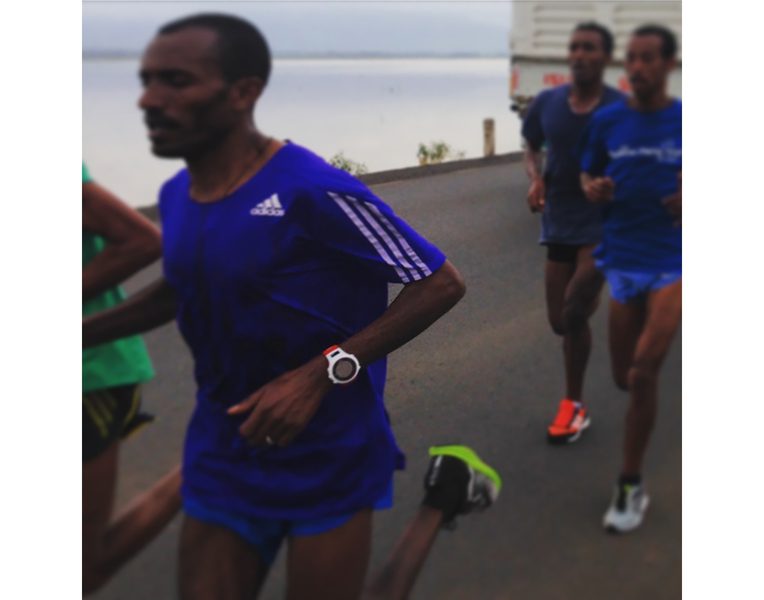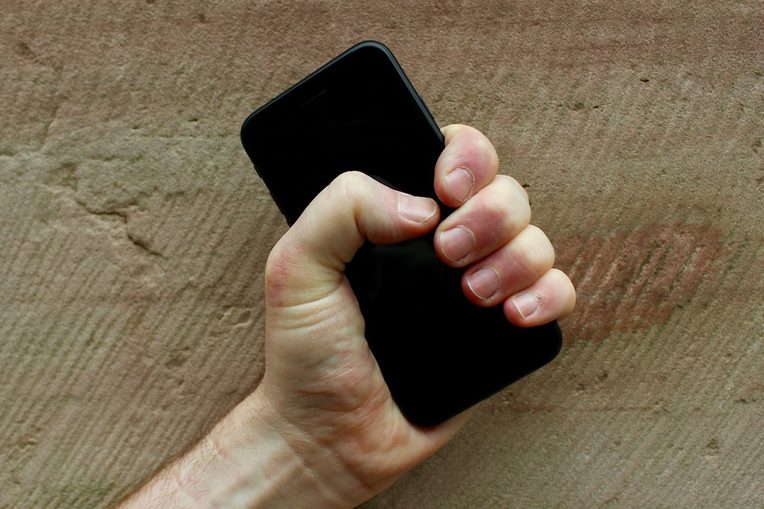Our Electric Monitors
From the Series: Our Lives with Electric Things
From the Series: Our Lives with Electric Things


Another Wednesday afternoon in Addis Ababa. We make our stiff-legged way toward the forest for our second run of the day. Zeleke rolls up his sleeve and shows me the watch he won for finishing second at the Fuzhou marathon in China; he has finally worked out how to change the language from Mandarin to English. He had to travel across town to Mercato to buy an adapter—it shares the single plug in his house with his stove.
“It says I burned 1600 calories yesterday,” Zeleke says, “but I have no idea how I am going to replace them.” He explains that he has started buying packaged food because it indicates calorie content; he wants to ensure he doesn’t “lose anything” through his training.
When we reach the forest, he starts his watch and we begin to jog slowly between the trees, in single file and silence. Suddenly the watch beeps loudly. Zeleke glances at his wrist and laughs. “One kilometer: seven minutes and twelve seconds!” he shouts.
On subsequent days, this becomes a game. We see how slowly we can complete afternoon runs, the purpose of which is merely to “massage” our aching legs. It occurs to me that Zeleke is using his watch in the opposite way of that for which it was designed. He is using it to run slower, to ensure that he doesn’t lose weight. He charges the watch to ensure he is recharging his body.
The GPS watch is overtaking running shoes as a runner’s most sought-after import. The ability to control the pace by feel, once a hugely respected skill, is no longer as highly valued. The beeps of the GPS runners’ watches drive them out of the hilly forest toward places where, as they say, “the kilometers come more easily.” The watch transforms bodies as it transforms the practice of training.

My watch fell asleep today. In fairness, it had stayed up all night, monitoring my heart rate, tracking my movement, and guesstimating my restfulness, all in conjunction with my phone. My phone and my watch are roommates now, although the mournful little buzz from my wrist when the Bluetooth signal drops suggests that one may be a bit more codependent that the other. Did I get my phone a pet or a friend?
Quantifying my heart rate means that the lure of numbers has slipped into my academic life. I know my heart beats slower on sabbatical than it does in my usual university routine. I know my heart races as I type out research documents, picking up the pace the longer I spend (eighty-five, ninety, ninety-five . . . sold!). I know it drops to a flatline of restfulness when I teach my students. I wonder if the problem of decreased lecture attendance comes down to a loss of heart in the room, or a failure to keep one’s finger on the pulse of student interest. The beats per minute in the classroom dip and drop to mirror my seventy-beat soliloquy.
Sometimes, to focus, I take my heart rate monitor off to give my hands more room at the keyboard. The heart rate beats on momentarily, a persistent countdown to an uncertain stability. When the newspapers talked of robots replacing jobs, I did not take the message to heart, although apparently my heart can text my wristwatch updates even when we are apart. Today, though, for the few hours while my watch napped in the comfort of its charger, I was without quantification. The gap in the data field was less a valley between the mountain ranges of daily input activity, and more a flatline through the screen. In my disconnected state, was I fully living?

We are beholden to screens and they are beholden to us. Swathes of people, electric monoliths in hand, held in attention. The gripping matters of energetic material agitation.
The information, illumination, and monitoring that these screens afford emerge from other sorts of holdings. Once held tight in the ground, materials are forced out and then transferred to those with more powerful holdings over lands, peoples, and monies. Aluminum, arsenic, boron, copper, carbon, epoxy, fiberglass, gallium, lithium, phosphorus, silicon, and tantalum are scoured, shifted, sifted, conceptualized, and formed into dense communication cuboids. The holdings of tantalum are notably prominent, shrouded in the violence and conflict that characterizes its brutal extraction from Congo’s coltan mines. These materials are carefully formed into conductive chemistries to be later electrified into a sufficiently advanced technology that might be, as Arthur C. Clarke once wrote, “indistinguishable from magic.”
The screen: a composition of crystals, in one state seeming to be fluid, then in another seeming solid. An uncertain material category that physically orientates and twists through modulations of electric current to illuminate blue, green, and red into a cornucopia of color and creative potential. The interaction designer conducts and frames these media forms with power and precision, right down to what one describes as the “letter that lives in a powerful matrix of surrounding space.” In first encountering such screens, one is spellbound—beheld in frequencies of agitation—as with Stanley Kubrick and Arthur C. Clarke’s monkeys meeting the monolith in 2001: A Space Odyssey. Encapsulated forms encapsulate. Perception is conducted. “The screen wall blowing in the wind assembles experience,” Vilém Flusser (1999, 57) writes, “processes it and disseminates it.” As these winds of communication blow across a rainbow of consequences, from war to wealth, we hold ever tighter.
Flusser, Vilém. 1999. The Shape of Things: A Philosophy of Design. London: Reaktion Books.